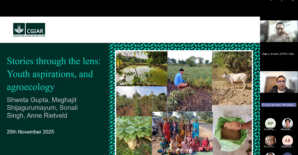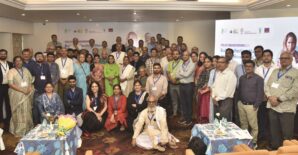NePAAA Webinar Series
April 13, 2022
01. Market integration in Vietnam within and beyond ASEAN
Presenter: Mamata Pradhan, Research Coordinator, IFPRI
Moderator: Aniq Fadhillah, Policy Facilitator, IFPRI
ABSTRACT
In this paper, we address the question of the agricultural market integration of Vietnam within the Association of Southeast Asian Nations (ASEAN), and its other top trading partners. The trade patterns are studied in terms of partners and products exported and imported by Vietnam in agricultural trade. Focusing on agricultural trade, we use two indicators, namely, “Trade Potential” and “Competition Indices,” to assess the nature and extent of the integration. More specifically, we identify the exports of Vietnam with high export potential and comparatively low competition in export markets. Though Vietnam has done well in international markets, the footprints in ASEAN region in agricultural trade is comparatively low. Overall, in terms of products and destination markets diversification, Vietnam can serve as a leading example for other ASEAN countries. Particularly in ASEAN region, higher trade potential with lower competition (value or volume) indicates an opportunity of higher returns for agricultural producers. In the case of Vietnam, within ASEAN, in rice and fish products, it has high potential and comparatively low competition. Similar situation is in the US and European markets. Where there is high potential in developing country markets comprises starches. There is also scope for regional cooperation in traditional exports such as “rice,” in terms of avoiding policy reversals in times of shocks.
02. India-Pulse Implication for Myanmar (including pulse roadmap done by SEARCA)
Presenter: Devesh Roy, Senior Research Fellow, IFPRI
Moderator: Aniq Fadhillah, Policy Facilitator, IFPRI-SAR
ABSTRACT
The paper attempts to fill a knowledge gap by examining India’s pulse complex, consisting of production, consumption, and trade policies. India’s pulse policies are anchored in a cereal-centric farming system and prioritize national self-sufficiency as well as the mitigation of relative price increases in food. On the farmer side, government policy includes price support (a minimum support price [MSP]) for different pulses initially without procurement, but later backed by public procurement. The MSP plus procurement elicited a comparatively high supply response. Without procurement, the MSP worked only to anchor prices and benefit traders at the farmers’ expense. By not accounting for the needed risk premium (for a supply response) the MSP kept domestic production low. Even as the world’s largest importer of pulses, the scale of pulse imports in India have generally not been large enough to cool its markets and bring down domestic prices. Instantaneous supply adjustments by exporters in response to trade policy changes are difficult.



